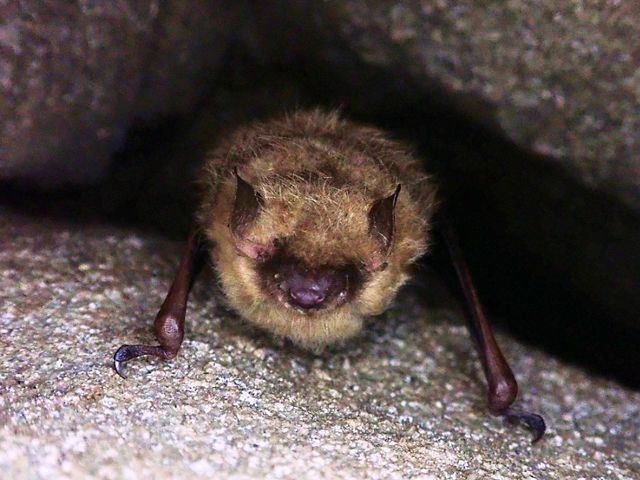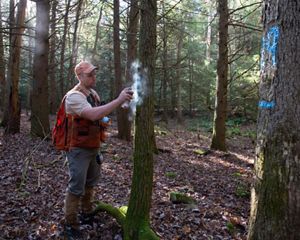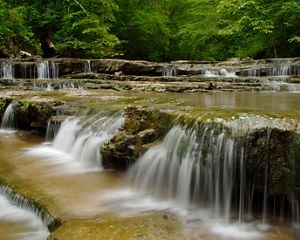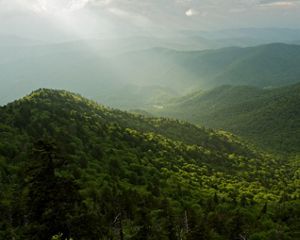Collaborating For Conservation
The Nature Conservancy depends on partners to advance its mission in Tennessee.
The Nature Conservancy boasts a history of implementing a science-based, pragmatic, solution-oriented approach that has led to playing a unique role in the conservation community. But we can't achieve our ambitious mission—in Tennessee or around the world—alone. A key to success is working collaboratively with partners spanning the public, private, academic and non-profit sectors. TNC is grateful for the partners who help us pursue our conservation priorities:
- Protect Healthy Oceans, Freshwater and Lands
- Tackle Climate Change

State/Local Agency Partners
- TN Advisory Committee on Intergovernmental Relations
- TN Dept of Agriculture
- TN Dept of Economic and Community Development
- TN Dept of Environment and Conservation
- TN Dept of Tourist Development
- TN Dept of Transportation
- TN Emergency Management Agency
- TN Regulatory Authority
- TN Wildlife Resources Agency
- Soil Conservation Districts
Agency Partners
Safeguarding Vulnerable Species
The Conservancy works with the Tennessee Wildlife Resources Agency (TWRA) on developing and implementing the State Wildlife Action Plan (SWAP). Mandated by Congress, SWAPs assess each state’s wildlife and habitats, identify problems that they face and outline actions needed to conserve them over the long-term. The Conservancy helped design Tennessee’s first SWAP in 2005, and updated it in 2015 to include a 10-year blueprint that maps where conservation investments are needed the most. TWRA and TNC also provide data collected for the Tennessee SWAP to other agencies and organizations to use for a variety of purposes.
Welcoming Back Brook Trout
Successful conservation results in Tennessee hinges on input, engagement and support from a diversity of partners from every sector. For example, TNC convened with partners from federal and state government, and the non-profit community, to remove an old culvert installed to maintain the flow of Briar Creek under a road in the Cherokee National Forest.
After determining that water was flowing too quickly for native brook trout to swim upstream, the partners—including the U.S. Forest Service, Tennessee Valley Authority, Tennessee Wildlife Resources Agency, Trout Unlimited, American Rivers and the U.S. Fish and Wildlife Service—generated support for replacing the old culvert with a state-of-the-art fish passage that mimics a natural stream channel to benefit brook trout, Tennessee’s only native trout species, which has suffered severe declines over the last century in response to pollution, overfishing and the introduction of the non-native rainbow trout in local waters.

Federal Agency Partners
- National Park Service
- Natural Resources Conservation Service
- Tennessee Valley Authority
- U.S. Army Corps of Engineers
- U.S. Fish & Wildlife Service
- U.S. Forest Service
- U.S. Geological Service
Restoring Forests
In 2009, The Nature Conservancy partnered with the Cherokee National Forest on coordinating representatives from 13 groups, including state and federal agencies, non-profit organizations and others to form the Cherokee National Forest Landscape Restoration Initiative (CNFLRI). Since then, the CNFLRI has provided science-based restoration recommendations to the U.S. Forest Service related to its work in the North Zone of the national forest. More recently, a second group—the South Zone Collaborative—formed to provide similar input for the national forest’s South Zone. Together, these groups are pioneering innovative restoration projects, many which are the first of their kind in the nation.

Corporate Partners
- Bridgestone Americas, Inc.
- International Paper Company
- Panther Creek Forestry
Corporate Partners
Studying Chestnut Mountain
It wasn’t long after Bridgestone Americas, Inc. donated the 5,700-acre Bridgestone Nature Reserve at Chestnut Mountain that TNC invited scientists from Cumberland University, Tennessee Tech University and the Tennessee Wildlife Resources Agency to gather data in an effort to learn more about the property’s species and conservation value. The species inventory received a boost thanks to a grant from the Barbara J. Mapp Foundation to support the acquisition and installation of 35 cameras, located throughout the Reserve, to gather valuable images and videos on the movements and activities of wildlife. Another grant, from the Berglund Family Foundation, made it possible to install Tennessee’s first MOTUS Wildlife Tracking Station, which uses radio telemetry to gain information about the movement of birds, bats and other species. Data generated by the station informs TNC and a consortium of partners, within Tennessee and throughout the northern hemisphere, about these species that spend all or part of their life cycle at Chestnut Mountain.
Nonprofit Partners
Protecting Land
In 2020, TNC concluded a project that marked the successful protection of 400,000 acres in Tennessee since opening our doors in the state in 1978. The project—acquiring an approximately 685-acre inholding within the Cherokee National Forest—symbolizes many aspects of TNC’s work in Tennessee and around the world. Thanks to a strong partnership with The Conservation Fund, TNC had the ability to move quickly on securing the parcel to provide time for the U.S. Forest Service to assemble Land and Water Conservation Fund dollars approved for purchasing and permanently protecting this property—one of the agency’s highest priorities in the Southeast. Once in ownership, the U.S. Forest Service intends to manage the inholding as they do the surrounding forest, for species protection and recreational opportunities such as fishing, hunting, camping, canoeing, kayaking and hiking, including along the nearby Appalachian Trail. The additional acres also bolster this mostly unbroken and forested Southern Appalachian Mountain landscape in the face of a rapidly changing climate.
Building Capacity
The Nature Conservancy assisted the Tenn Green Land Conservancy (TennGreen) with developing a Strategic Land Conservation Plan that enables them to continue facilitating and supporting land acquisition priorities for state agencies and local communities while pursuing their own conservation priorities. The plan includes GIS technology that helps to identify and prioritize land acquisitions to achieve the greatest conservation outcomes. For years, TennGreen has worked successfully in partnership with state agencies, local communities and organizations like TNC to create and expand some of the state’s most popular public recreation areas.
Foundation Partners
Support Spans Generations
The Dan and Margaret Maddox Fund has long supported Tennessee organizations that improve the lives of young people and further wildlife conservation, a mission now carried out by a new generation that includes Dan and Margaret’s granddaughter, Tommye, who says, ““I feel that now, more than ever, people long for a connection with nature and the outdoors. For me, time spent in nature restores peace and harmony and calls me to enjoy her wonders with respect. When I’m outdoors, I see how biodiversity strengthens ecosystems just like diversity enriches our human communities. Going forward, it is fundamental to engage diverse communities in nature conservation.”
Over the years, the Maddox Fund has supported TNC projects at the Duck River and Harms Mill Dam, in urban areas like Nashville and, most recently, at the Bridgestone Nature Reserve at Chestnut Mountain. She adds, “At the Maddox Fund, we are grounded in the conviction that humanity, nature and all life are interconnected, and that these relationships must be grounded in respect. We are thankful for TNC’s mission to conserve the lands and waters on which all life depends. We share that vision are thankful for the partnership. My grandparents would be pleased.”
Support Tennessee Nature
Help us work with landowners and ensure a future in which people and nature can thrive.





